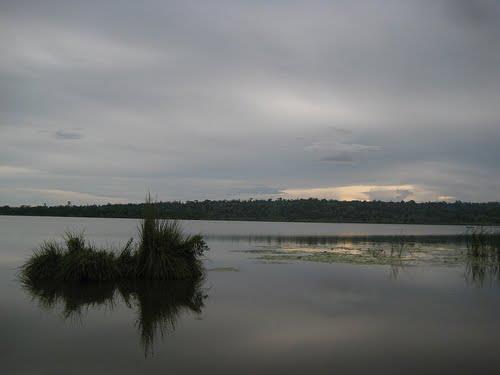Located on the border between Burundi and Rwanda, Lake Cohoha is a shallow lake with a fragile ecosystem. This vital freshwater reservoir faces a number of environmental challenges that threaten its biodiversity and sustainability.
Geography and characteristics of Lake Cohoha
Lake Cohoha belongs to a group of lakes in East Africa, linked by the Kanyaru River. Covering an area of around 74 km² (with a 19 km² portion in Rwandan territory), Lake Cohoha is relatively shallow, with an average depth of 5 meters. It is almost 32 km long, with a maximum width of 2 km. Its marshy shores are ideal for growing vegetation.
Ecological importance of the lake
- Fresh water tank : Lake Cohoha is a vital water resource for the population of the region, both Burundian and Rwandan. Water from the lake is used for domestic, agricultural and livestock purposes.
- Biodiversity : The marshy areas of Lake Cohoha are home to a wide variety of flora and fauna. There are many different species of fish, as well as aquatic birds (herons, egrets, etc.).
- Local climate regulator The presence of Lake Cohoha helps moderate temperatures and humidity in the surrounding area.
Natural beauty and tourist activities
The serene beauty of Lake Cohoha is punctuated by the presence of fishermen at work on their traditional boats. Green hills surround this expanse of water, dotted with reedbeds that are home to a rich avifauna.
- Boat trips : Visitors can opt for boat excursions to explore the lake, observe wildlife and enjoy the unique ambience of the place.
- Birdwatching : The shores of the lake are an ideal spot for observing numerous bird species.
- Fishing: Fishing is one of the lake's main activities, providing both a food resource and a source of income for local communities.
Environmental threats and solutions
Lake Cohoha faces major environmental challenges, threatening its biodiversity and the sustainability of the resources it provides for the local population. It is crucial to implement strategies to preserve this fragile ecosystem.
- Erosion and sedimentation : Soil erosion on the surrounding hills causes a significant input of sediment into the lake, contributing to siltation and threatening the aquatic species that live there.
- Pollution : The use of fertilizers and pesticides on crops and the dumping of waste threaten the quality of the lake's waters.
- Overfishing : Pressure on fish stocks is a threat to the lake's ecological balance.
Solutions to preserve Lake Cohoha
- Raising awareness in local communities: Informing local residents of the consequences of unsustainable management of the lake's resources is a major step forward.
- Erosion control: Reforestation and agroforestry practices can limit soil degradation and reduce the amount of sediment delivered to the lake.
- Pollution control: Controlling agricultural practices (fertilizers, pesticides) and setting up sanitation systems are necessary to reduce pollution of the lake.
- Fishing regulation : Defining protection periods for species and introducing more environmentally-friendly fishing methods are essential.
Conclusion
Lake Cohoha, the natural jewel of Burundi and Rwanda, is a freshwater reservoir and a fragile ecosystem that plays a vital role for local communities. However, the environmental challenges it faces threaten its biodiversity and sustainability. The implementation of sustainable management strategies, involving local communities and the authorities of both countries, is essential to preserve this natural treasure and ensure its sustainability for future generations.
Photo © Facebook Page de Umurundikazi


There are no reviews yet. Be the first one to write one.